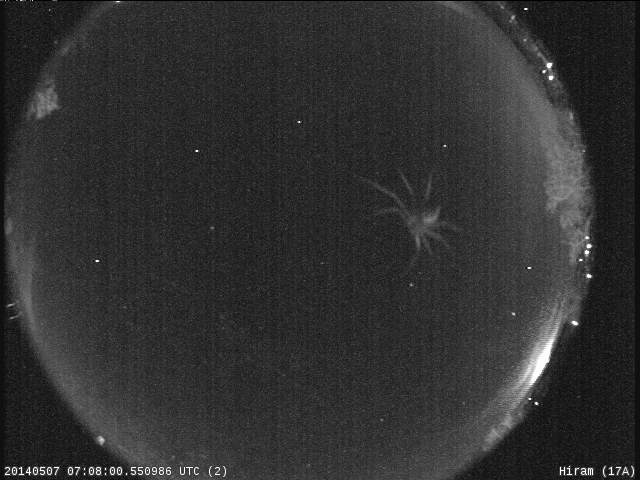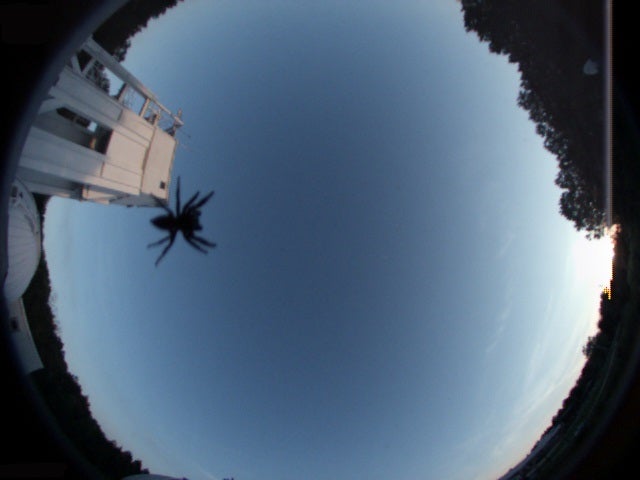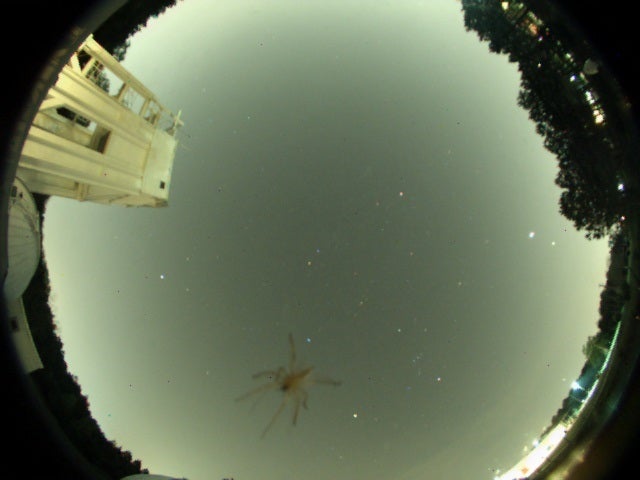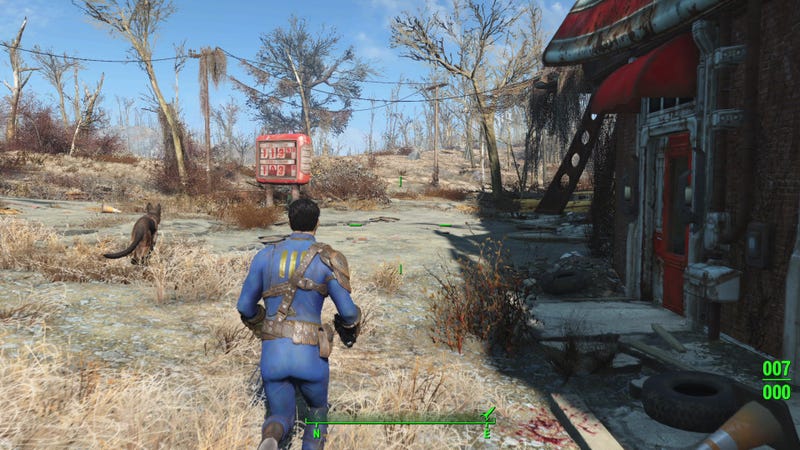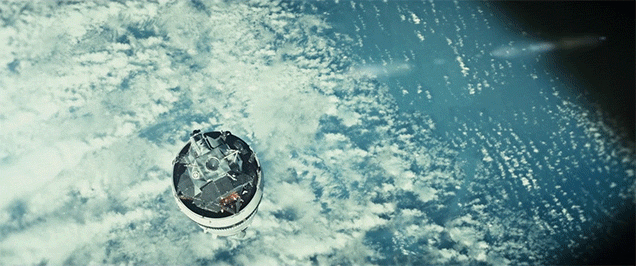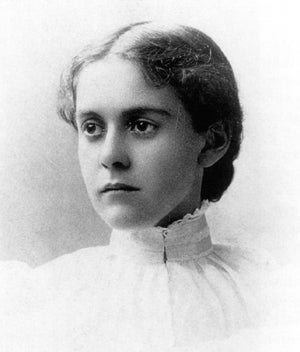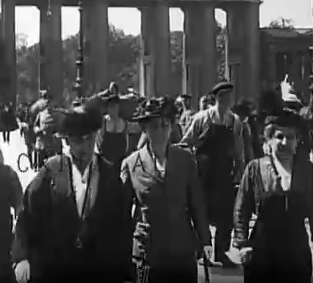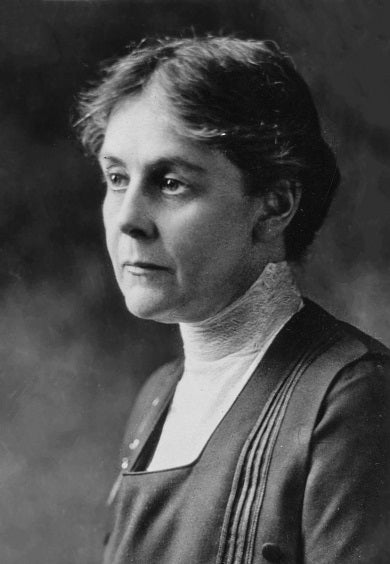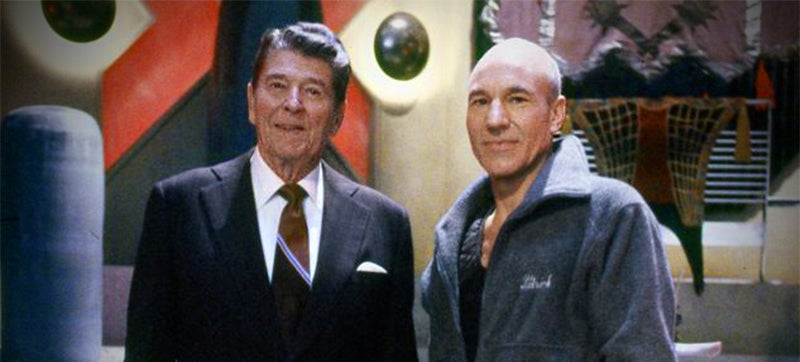![The Doctor Who Finale Had Such a Great Ending, I Forgive Everything]()
I had some mixed feelings about tonight’s episode of Doctor Who. The plot of the episode (and the season) felt severely half-baked, to say the least, and great moments intermingled freely with a certain amount of WTF. But that ending? Was the greatest. That ending retroactively made the whole thing great.
Spoilers ahead...
I’m just going to start out by talking about why that ending was so great, and then work my way back to the rest of the episode. Because when something ends that well, you want to go back and see the rest of the story through that lens.
The big “twist” in tonight’s “Hell Bent” has to do with the Doctor’s neural block—in a framing sequence, you keep seeing Clara working in a Nevada diner (the same one from “The Impossible Astronaut,” sort of) and the Doctor is telling her the story of his return to his home planet, Gallifrey. Clara seems not to know who the Doctor is, and meanwhile in the “return to Gallifrey” story the Doctor is plotting to erase Clara’s memory of him.
The twist is that the Doctor, not Clara, has had his memory wiped. He doesn’t know that this is Clara he’s talking to, and he’s not even sure how much of the story he’s telling really happened, and how much he’s made up after the fact. He’s sort of reconstructed his lost memories by the hole they left behind. As he says, a story is what a memory becomes once it’s been forgotten.
![The Doctor Who Finale Had Such a Great Ending, I Forgive Everything]()
This is great for several reasons:
1) Clara gets to have agency and decide her own fate, instead of having the Doctor decide it for her.
2) The Doctor thinks Clara needs her memory wiped, so that she can be left on Earth to have a “normal” life and nobody will be able to find her by zeroing in on her memories of him. (Leaving aside the fact that she’s a time-frozen zombie, which could hinder her ability to have a “normal life. We’ll get to that in a minute.) But that’s not what Clara wants, and she gets her way.
3) Instead, Clara turns the tables on the Doctor—he wants to erase her memory? Fine. She erases his memory of her instead. He can take his own medicine for a change. And maybe this theoretically makes Clara safer, since nobody can use the Doctor to get to her. I love the bit where she tells him that tomorrow’s not promised to anybody, but she insists on keeping her past.
![The Doctor Who Finale Had Such a Great Ending, I Forgive Everything]()
4) This is pretty explicitly a subversion of what happened to poor Donna Noble, in one of the most infamously unfair companion exits in Doctor Who’s history. Donna Noble becomes a kind of version of the Doctor (the “DoctorDonna”) and her brain can’t take it—so she has to be mind-wiped for her own protection. After that, if she even hears someone mention the Doctor, her head will explode like something out of Scanners. (Which makes it too bad that the Doctor tends to stomp around shouting, “I’m the Doctor. I’m a Time Lord. I’m the oncoming storm, etc.” all over London, all the time.)
5) The Doctor is forced to admit that it almost doesn’t matter which one of them forgets the other—the problem is that they’ve become bad for each other, because they’re too similar. And (as has been built up as an idea all season) the Doctor is willing to go to insane lengths to avoid losing Clara, to the point that where when he thinks she’s dead he goes kind of nuts a couple times. And in this episode, he breaks all the rules to bring her back from the dead. But him forgetting her works just as well as her forgetting him. Which is neat.
![The Doctor Who Finale Had Such a Great Ending, I Forgive Everything]()
6) Clara’s arc last season was all about her learning to be like the Doctor, and sort of becoming another Doctor. And instead of taking that away from her in the name of resetting the status quo, she actually gets to “graduate.” She gets her own TARDIS to fly away in, with Ashildr/Me, another immortal, by her side. And it’s not just a random chicken-leg-that-could-become-a-TARDIS, like Rose got, but a full-fledged working TARDIS from Gallifrey. It’s even got the color scheme and design of the original Hartnell TARDIS, although it’s stuck as a 1950s diner instead of a police box.
Of course, given that the Doctor refused to travel with Ashildr because two immortals traveling together “wouldn’t be good,” and Clara is now an immortal—and is too similar to the Doctor in any case—they could get up to a lot of mischief.
Plus Clara is still frozen in time at the moment of her death, and she’s supposed to return to Gallifrey so she can be returned to her timestream and the universe can reset. She’s just taking rather a long detour along the way, and given how unclear the rules are on Doctor Who, there’s no knowing if this will have bad consequences for the universe.
And then there’s the Hybrid thing
In a lot of ways, this was a typical Steven Moffat finale. Unlike last year, when we had an army of zombie Cybermen and Missy wreaking some very concrete havoc, “Heaven Sent” is once again about a much more abstract danger. There’s some hand-wavy notion that the Hybrid is going to threaten all of time, and destroy everything, but it’s left incredibly vague—much like the universe ending in “The Big Bang,” time going woobly in “The Wedding of River Song,” and the Doctor’s timestream going foop in “The Name of the Doctor.”
(Contrast that with 1981’s “Logopolis,” where we’re told the universe is ending, but we actually see Logopolis dying and then get to witness Nyssa’s reaction as her homeworld, Traken, is extinguished.)
![The Doctor Who Finale Had Such a Great Ending, I Forgive Everything]()
Here’s what we learned about the Hybrid. Prophesies from the Matrix, the computer made up of the consciousnesses of all the dead Time Lords, say that it’s the combination of two warrior races. And it’ll one day cost a billion hearts to heal its own, and will stand in the ruins of Gallifrey. And when the Doctor was a young Time Lord, he sneaked inside the Cloister, where the Matrix is physically kept, and the ghosty things that guard the Matrix told him the secret of the Hybrid. This scared him so much, he went a bit mad and ran away from Gallifrey.
And now, the Time Lords have decided that the threat of the Hybrid has become so imminent that they need to trap the Doctor to find out what he knows. Which is why they got Ashildr to lure him into her trap street and then teleport him inside his own Confession Dial. The Confession Dial, we finally learn, is supposed to be a way for a dying Time Lord to confront his or her demons and make peace with death before joining the Matrix. But the Time Lords turned it into a torture chamber for a living Time Lord, the Doctor. (Which makes it odd that the Confession Dial can kill you, both because that would be an odd way to make peace with your demons, and because the Time Lords risked having the Doctor die before he told them anything.)
![The Doctor Who Finale Had Such a Great Ending, I Forgive Everything]()
I’ve watched “Heaven Sent” a couple times, but I’m still confused by the Hybrid stuff. Here’s what I think is going on. The Doctor doesn’t really know for sure who or what the Hybrid is, despite what he said last week. The whole time he was trapped inside his Confession Dial, he was allowing the Time Lords to think he knew the truth about the Hybrid, so they would need him and he could have something to bargain with.
As soon as the Doctor gets out of the Dial and is on Gallifrey, he sets about sulking inside the old farmhouse where he lived as a young orphan. The Time Lords try to force him out and then try to make nice with him, but nothing works, until the resurrected Rassilon himself comes to visit the Doctor—who leads all the other Time Lords in a kind of quiet rebellion, and ends up throwing Rassilon off Gallifrey.
And then the Doctor immediately uses the Time Lords’ fear of the Hybrid to trick them into letting him talk to Clara one last time, so she can help him figure out the truth. In fact, the Doctor doesn’t care about the Hybrid thing—even though it once scared him enough that he fled Gallifrey—he just wants Clara back. So they do the aforementioned thing of bringing Clara back from the dead. At which point the Doctor goes all Natural Born Killers, grabs a gun, and shoots a poor Time Lord—then flees into the Matrix.
![The Doctor Who Finale Had Such a Great Ending, I Forgive Everything]()
So who is the Hybrid? The Doctor seems to think it’s Ashildr, because she’s human combined with Mire technology. Ashildr suggests it could be the Doctor, because he’s spent so much time on Earth he’s practically part human. But then Ashildr says it’s really two people: the combination of the Doctor and Clara, because they’re just so dangerous together. (Really?)
I guess the Doctor sort of is the Hybrid, because in bringing Clara back from the dead, he’s causing a catastrophic rupture in time that could borkify the entire universe. (“Borkify” is a technical term used in such circumstances, trust me.) Although we see no evidence of such borkification. But in the end, when the Doctor realizes he’s having his memories of Clara wiped, he says he accepts this, because he went too far, and he became the Hybrid for fear of losing her.
![The Doctor Who Finale Had Such a Great Ending, I Forgive Everything]()
Both the Doctor and Ashildr actually stand (or sit) in the ruins of Gallifrey at the end of this episode, but that’s just because it’s the end of the universe and everything is in ruins.
So I’m not sure what the takeaway of all this is. Maybe the Doctor becomes the Hybrid when he forgets to be the Doctor? Maybe the Hybrid is just a metaphor for people screwing around with time too much? Rose brought Jack Harkness back to life by basically rolling back time after she had looked into the Time Vortex—was Rose the Hybrid? Is the Hybrid something that we still have to worry about in the future, or has it already happened?
![The Doctor Who Finale Had Such a Great Ending, I Forgive Everything]()
I do like that the Doctor had another one of his “no limits” moments, like in “The Waters of Mars” and “The Girl Who Died,” and this time he actually faced some consequencesand pushback—including from Clara, who didn’t actually ask to be brought back to life. As various people, including Ashildr, point out, the Doctor is acutally dishonoring Clara’s choices by not letting her stay dead.
So I like the storyline of the Doctor breaking all the rules to save Clara from death, but the “Hybrid” thing needed to be fleshed out a lot more, probably a good deal earlier, for me to be invested in it.
The Confession Dial thing
And finally, the other thing that was super fascinating in this episode is how it turns the events of last week’s episode on their side. The Doctor could have left the Confession Dial at any time, as the Time Lords keep pointing out, if he’d just told what he knew about the Hybrid.
(Oh, and it’s odd how Ohisa and the Sisterhood of Karn, who are separate from the Time Lords, show up and are at first treated like random interlopers— but by the end of the episode, they seem to be sort of in charge.)
![The Doctor Who Finale Had Such a Great Ending, I Forgive Everything]()
Last week, it seemed as though the Doctor was willing to go through four and a half billion years of dying and coming back in order to keep the secret of the Hybrid (although it must be pointed out, he only experienced this as a few days, since there’s no way he could have remembered all of those iterations.) Because the Hybrid is too dangerous a secret for anybody to know.
But now, I guess that turns out to have been just a lot of malarkey, and in fact the Doctor was just playing a very long con, trying to make the Time Lords think he knew a dangerous secret about the Hybrid when in fact he just knew how to play a stratocaster. He knew all along that it was the Time Lords that had trapped him in there, and he was playing them, because he knew they had the power to bring Clara back.
That’s going to change how I watch “Hell Bent” in future.
![The Doctor Who Finale Had Such a Great Ending, I Forgive Everything]()
All in all, this was sort of a half-brilliant, half-frustrating season of Doctor Who. The season’s big arcs weren’t as satisfying as last year’s, with the exception of Ashildr. And the main thing I’m going to remember about any of this season is Peter Capaldi giving more long, electrifying speeches, because of all those longer stories. This version of Doctor Who, in which the Doctor’s monologues are the main action, was intriguing but ultimately a little bit low on story.
And in retrospect, I think we were supposed to glean something about the Doctor swapping his sonic screwdriver for a dark hoodie, sunglasses and electric guitar—something about the Doctor, shaken by the meeting with Baby Davros, having some kind of identity crisis—but I don’t entirely get it.
But I’ll say the same thing about the season as a whole as about this individual episode: the ending was so brilliant, I’m inclined to love the whole thing retroactively because it all led up to this.
Charlie Jane Anders is the author of All The Birds in the Sky, coming in January from Tor Books. Follow her on Twitter, and email her.
http://www.amazon.com/All-Birds-Char...

